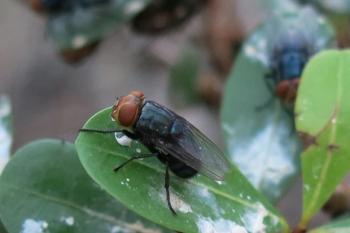
Skunk named as adversary in EPM cases
The striped skunk is being monitored closely by researchers who believe the animal serves as an intermediate host for Sarcocystis neurona, a parasite that causes equine protozoal myeloencephalitis (EPM) in horses.
The striped skunk is being monitored closely by researchers who believethe animal serves as an intermediate host for Sarcocystis neurona, a parasitethat causes equine protozoal myeloencephalitis (EPM) in horses.
The skunk's habitat spans the United States, Canada and north Mexico,which may help researchers understand the wide geographic distribution ofEPM, according to The Horse Interactive.
A study involving the link between the skunk and EPM is being conductedby researchers at the University of Florida, Washington State Universityand the Universty of Missouri.
"We were looking at a variety of aspects of (S. neurona) and howit interacts with the horse, skunk and oppossums," says Dr. Ellis Greinerof the University of Florida College of Veterinary Medicine.
In the study, skunks that were at first negative for the parasite wereinoculated with a parasite collected from an infected oppossum. Skunks developedantibodies to S. neurona, sarcocysts built up in their muscles and the muscleswere fed to oppossums that shed sporocysts in their waste matter. A foaland lab mice were inoculated with the sporocysts, and the foal developedantibodies to the parasite in its central nervous system fluid. The miceall developed antibodies and died or had to be euthanized.
The cat has also been identified as an intermediate host in the laboratory.
"The difference between the skunk and the cat study is that in orderto get a really good infection in the cat, researchers had to immunosuppressthe cat before the parasite it could be observed in the cat muscles,"says Andy Cheadle of the University of Florida. "We didn't do anythingto the skunks and they became heavily infected with sarcocysts (when thesporocysts were administered). The skunk has been reported to be naturallyinfected with sarcocysts, therefore it is highly likely to be a naturalintermediate host."
Research groups are also examining other potential hosts.
Newsletter
From exam room tips to practice management insights, get trusted veterinary news delivered straight to your inbox—subscribe to dvm360.






